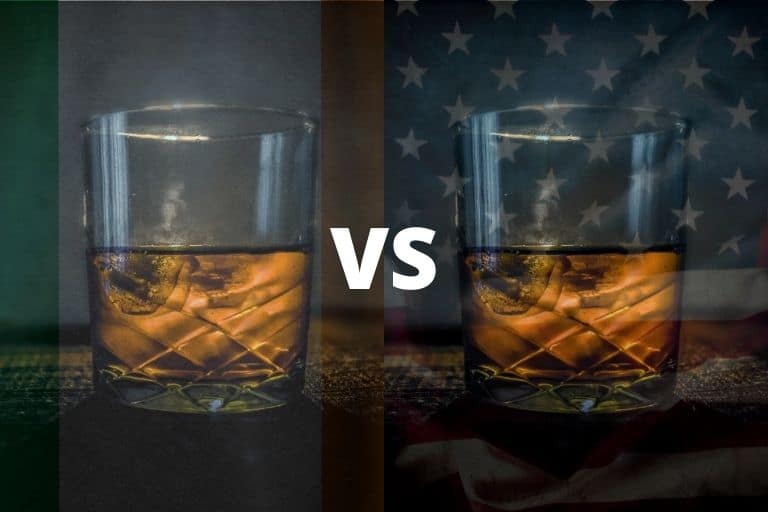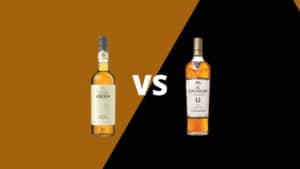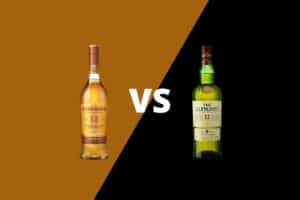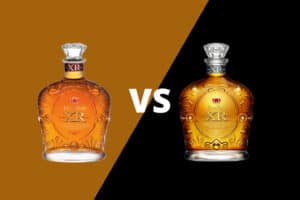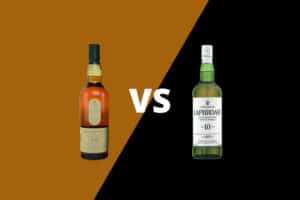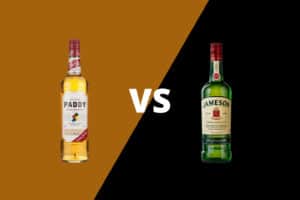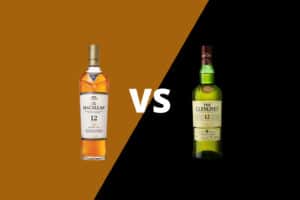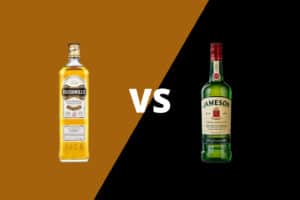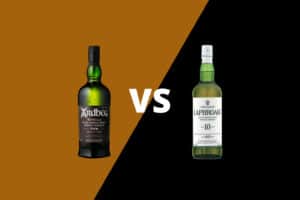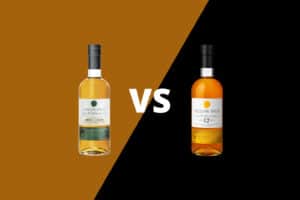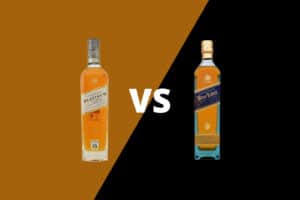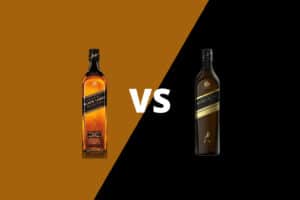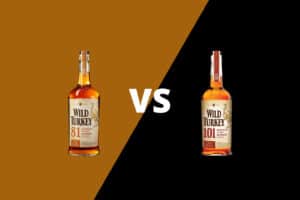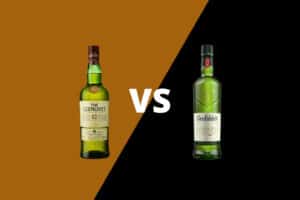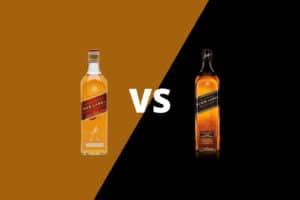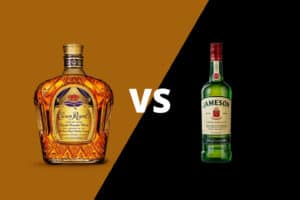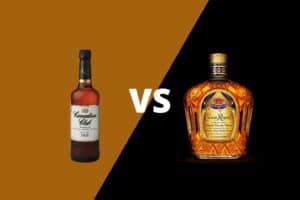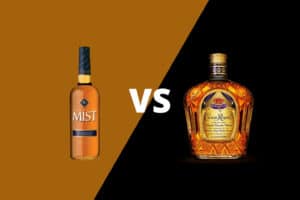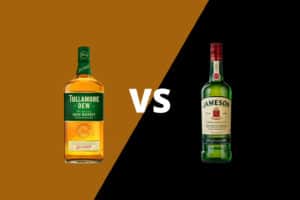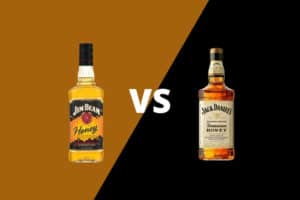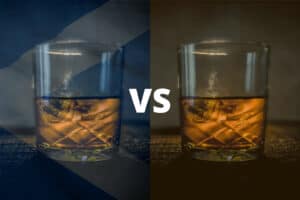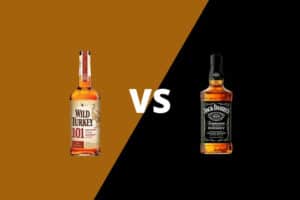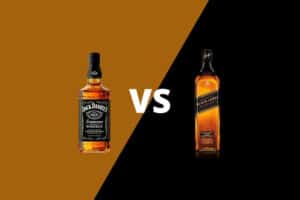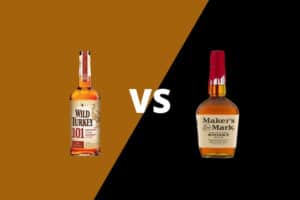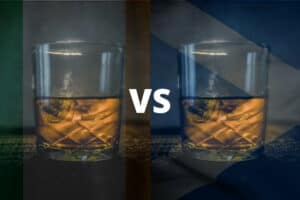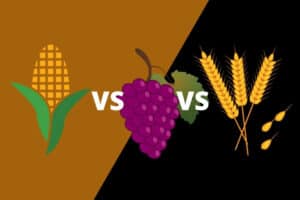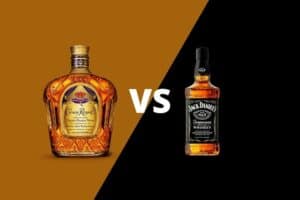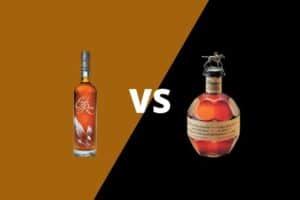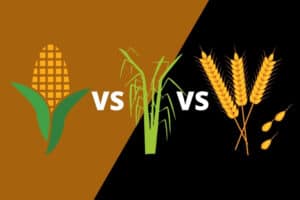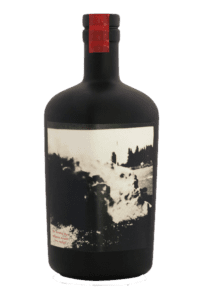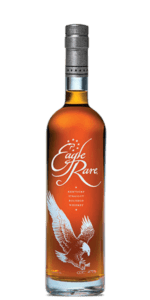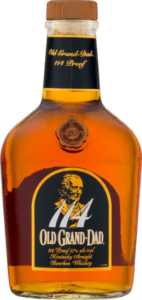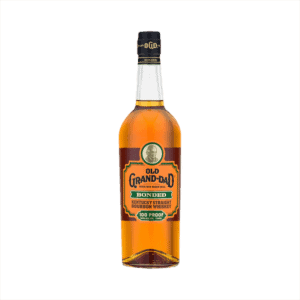We can all agree on the spelling.
While American and Irish whiskeys have many things in common, both agree that whiskey should be spelled with an ‘e.’
That puts these two styles of whiskey in the minority. Scotch, Japanese and Canadian whisky all spell the work sans ‘e,’ as do most up-and-coming whiskey nations like Australia, New Zealand, Taiwan and India.
That’s not the only thing these two nations when it comes to their whiskey habits. As you’ll see in this post, the tens of millions of Irish immigrants who moved to the New World had a considerable influence on the unique spirit that is today’s American bourbon whiskey.
Table of Contents
The Key Differences Between Bourbon and Irish whiskey
There is one crucial difference: Bourbon is exclusively made in the United States. And Irish whiskey is exclusively made on the island of Ireland.
You’ll see there are many other differences when we get into the various sub-categories. But throughout this article, try to remember there are Irish whiskeys that utilize American-style traditions and Bourbon brands that incorporate styles perfected by the Irish. We’ll explore these variations in subsequent sections. As the world of whiskey continues to grow, distillers on both continents continue to push boundaries on traditional practices.
History
There is a lively debate about whether whiskey originated in Ireland or Scotland. The earliest written evidence of distillation comes from Scotland in 1494, but many historians and anthropologists believe whiskey distillation began on the British Isles over a millennium ago!
For much of that history, Irish whiskey was considered the superior product. On the global market, thrice-distilled whiskeys made in Dublin were held in higher esteem than Scottish single malts or American bourbons during most of the 19th and 20th centuries. But a few disastrous coincidences crumbled a global empire and nearly led to the complete extinction of Irish whiskey.
In the 1800s, Ireland held a significant share of the global whiskey market in both volume and value. But the invention of the Coffey still in the 1830s upended the whiskey world. While the Irish decided not to mess with a good thing and continued to distill using their enormous copper pot stills, the Scots embraced column distillation. A war was waged in the British parliament. Legislation was passed that allowed products distilled using the modern techniques to be called ‘whisky.’ The Irish were so upset they quit using the word ‘whisky’ and unanimously called their product ‘whiskey’ in protest. The Americans, who had a fondness for Irish whiskey, soon followed.
In 1916, the Irish fought to break away from British rule. This had a disastrous effect on the Irish whiskey market. The British Navy held superiority throughout the world on the high seas. The British refused to export Irish whiskey to any of the countries in the commonwealth — which at the time included India, much of modern-day China and Burma, Canada, Australia, swaths of Africa and more. Scotch whisky was the immediate beneficiary, which helps to explain why much of the rest of the English-speaking world continues to use the ‘whisky’ spelling.
Then, in 1920, American Prohibition cut the Irish off from their largest single remaining export market. And domestic laws aimed at constraining alcoholism tamped down on whiskey promotion, marketing and bar and home sales. By the time American Prohibition ended in 1933, the Irish were on the ropes. At one point there was only one remaining operational distillery on the entire island. Luckily, the few remaining producers banded together and on the back of one single brand — Jameson — crawled out from the bottom to slowly rebuild their international reputation. Today, many of the stills that went quiet during the dark times have returned, and new distilleries are popping up throughout Ireland as the whiskey renaissance continues to lead global drinking trends.
Another impact of the repeal of Prohibition was the way bourbon was aged. Today, many whiskey nerds know that all bourbon must be matured in new American charred oak barrels. But let’s look into that barrel requirement…
After Prohibition ended, there were a lot of thirsty Americans, and the industry roared back to life to crank out as much alcohol as quickly as possible. In 1938, as part of Franklin Delano Roosevelt’s ‘New Deal’ legislation, the requirement for whiskey to be aged in new American charred oak barrels was codified into law to create jobs for the influential timber industry and coopers’ unions.
Because of that requirement, the international market for barrels revolves around American whiskey. The secondary market for used barrels — predominantly from Kentucky and Tennessee — sees barrels first used in the United States and then shipped to traditional whiskey producing nations like Scotland, Ireland and Japan, and increasingly into emerging whiskey producing countries like Australia, New Zealand, India and Taiwan.
The implications of FDR’s policy are vast. They created a generational shift in the perceptions of bourbon and rye whiskeys among Americans and the world.
For example, the bold American in-your-face style of whiskey making would have been unrecognizable to a pre-Prohibition whiskey enthusiast. And at one time, most American whiskeys made in the United States and Canada would have been virtually indistinguishable from each other. Blended whiskeys, bourbon and rye whiskeys were not independent categories but rather vague styles that merged into one another.
How Whiskey is Made
First, you make the beer. Then you make the whiskey.
The modern whiskey master distiller is one part beer brewer, one part chemist and one part ‘whiskey sommelier.1‘ Distillers in both the United States and Ireland have many similarities, but a few key differences as well.
First, the fermentation process — i.e., the beer brewing bit.
Distillers in both countries make whiskey using traditional grains: malted barley, corn, rye and wheat. But unlike the traditional beer brewer, the brew they make will remain unhopped and flat at the end of fermentation. Each distiller may use any combination of these grains, but there are specific legal requirements and strong traditions for the specific grain bills used for particular styles of whiskey.
Bourbon must be made with 51 percent corn. Irish single malt whiskey is made with 100 percent malted barley. Irish pot still whiskey is made with a combination of malted and unmalted barley. And Irish copper pot whiskey is traditionally a blend of single malt and single pot whiskeys. Irish blended whiskey – the largest category in terms of volume sales – most often uses a combination of malt whiskeys and grain whiskeys made predominantly of corn and/or wheat.
There are some other differences in how they mash — or make their beer. Americans tend to leave the terminal beer on the grain when distilling, while the Irish — along with the Scots and Japanese — most often separate wort from the grains using a lauter system.
Next, let’s talk distilling.
Both the Americans and Irish use combinations of column reflux and copper pot stills. Single malt whiskey must be made on a copper pot still and be distilled at one distillery — if the distillates from two or more distilleries are blended, it is simply called malt whiskey.
Pot still whiskey must be made in an, um… pot still. If it’s from one distillery, it’s a single pot still whiskey.
There is a centuries-long tradition of triple distillation when Irish whiskeys are made with a traditional copper pot still. In contrast, most single malt distilleries in Scotland use double distillation. We should note that this is not a requirement in either country — there are double-distilled malt whiskeys from Ireland and triple-distilled single malts from Scotland.
Grain whiskey can be made of any combination of cereal grains in a column still. If it’s made at one distillery, it’s single grain whiskey – which can be confusing because it doesn’t have to be made from a single ‘type’ of grain.
Irish blended whiskey combines any of the above whiskeys together.
Maturation
New American charred oak barrels.
Other than the national requirement, that may be the most significant difference between Irish whiskey and bourbon. Hell, the requirement that all Bourbon whiskeys be matured in new American charred oak barrels might be the biggest differentiator between bourbon and any international whiskey style and a driving force that shapes the modern international whiskey industry.
We mentioned this requirement more in-depth in our History section above, which helps to explain why nearly all Irish whiskeys are matured predominantly in ex-bourbon casks. But it’s not a requirement, and there are some innovative uses of casks during maturation. Some Irish whiskey distilleries have their own coopers, who repurpose used whiskey barrels into ‘new’ casks. Some re-char the barrels for more flavor. And both big-name international brands and smaller craft distilleries in Ireland are experimenting with new charred oak as a unique product identifier.
Both Irish and American whiskey makers utilize other types of casks to finish whiskey. Redbreast is a well-known Irish brand of single pot still whiskey that relies on sherry cask finishing to offer nuanced, sweet sherry and raisin flavors to the finished products. And in America, Angel’s Envy Bourbon is often credited with shifting the way bourbon makers think about sherry and other wine cask finishes.
What is Irish whiskey?
Irish whiskey describes any whiskey that is made on the island of Ireland. This includes products made in both the Republic of Ireland and Northern Ireland — an independent country and part of the United Kingdom.
Northern Ireland and the republic have been at the root of some export disruptions in the past few years. Northern Ireland is no longer part of the European Union because of the U.K.’s Brexit from the bloc. And the rollercoaster ride of tariffs between the E.U., U.K. and U.S. have wreaked havoc on import/export merchants because of the penalties on single malt products of the U.K. — some included both scotch and North Irish products while others targeted just those produced in Scotland. Sheesh. The term ‘Irish Whiskey’ has gotten a little more confusing in recent years…
Types of Irish whiskey
There’s a lot of meaning behind the words on the label. While ‘Irish Whiskey’ describes any product from the island of Ireland, the categories have implications on how the product is made.
Single malt whiskey is made of 100 percent malted barley and distilled using a copper pot still at one distillery.
Malt whiskey is a blend of single malts from two or more distilleries.
Pot still whiskey must be made from a mash of 100 percent barley — with at least 30 percent consisting of malted barley and 30 percent consisting of unmalted barley. Up to 5 percent of the grains can be other cereal grains, including corn, wheat and rye.
Single pot still whiskey is pot still whiskey made at a single distillery.
Grain whiskey can be made on either a copper pot or column still. It is made with up to 30 percent malted barley, with the remaining grains usually consisting of either wheat or corn.
Single grain whiskey is grain whiskey made at a single distillery.
Blended Irish whiskey is a combination of any of the whiskeys above. The most well-known example is Jameson — the bestselling Irish whiskey in terms of sales volume. As a result, this is often the type of product most associated with the Irish whiskey category.
What is Bourbon whiskey?
Bourbon must be made from a mash of at least 51 percent corn. It must be distilled and matured in the United States and aged in new American oak charred barrels. Straight whiskey must be matured for at least two years, and any whiskey under four years must carry an age statement.
Types of Bourbon
Straight bourbon whiskey is aged for at least two years in new American charred oak barrels.
Kentucky bourbon is a product of Kentucky. Although most of the proof gallons of bourbon distilled each year are produced in Kentucky, a growing number of craft bourbons have sprung up in each of the 49 other states in the union.
There are several types of styles of bourbon. Although these terms are not regulated, they fall into several general categories.
Traditional bourbons have about 75 percent corn, with the remaining secondary grains more-or-less evenly split between rye and malted barley.
High-Rye bourbon is made with about one-quarter rye as the primary flavoring grain. It’s important to remember these are still bourbons – and contain at least 51 percent corn – as opposed to American rye whiskey, which is a separate category and contains at least 51 percent rye in the mash bill.
Wheated bourbons utilize wheat as the primary flavoring grain and do not contain any rye.
A growing number of non-traditional bourbons use ‘exotic’ grains like quinoa, malted rye, buckwheat, oats, rice and other grains not traditionally associated with bourbon production.
[RELATED: Scotch vs Bourbon]
1 We have worked with enough sommeliers to understand how the term ‘whiskey sommelier’ might land among the wine audience. We assure you we meant no offense, we’re merely trying to impart the importance of olfactory sensory perception while nosing and tasting barrels during the blending phase of whiskey production and that no somms were harmed in the making of this web post.

